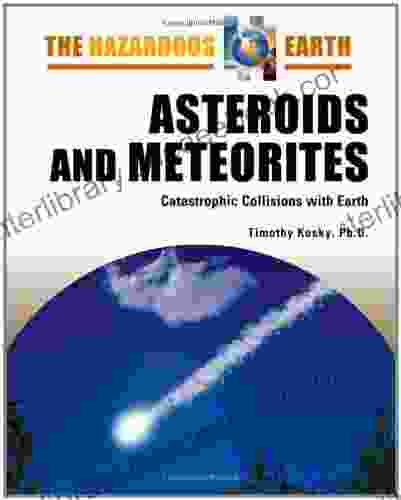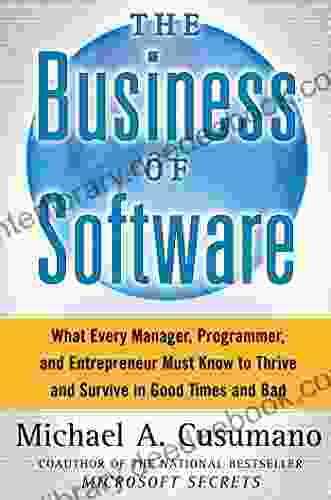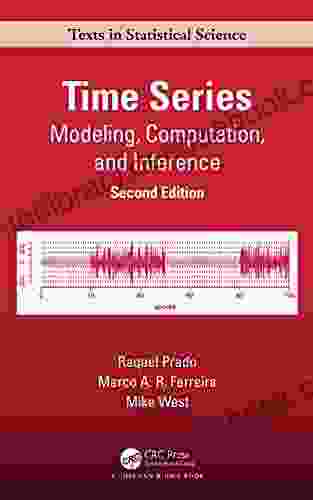Asteroids And Meteorites: Catastrophic Collisions With Earth (Hazardous Earth)

The vast expanse of space holds countless celestial bodies, among them asteroids, comets, and meteoroids, that pose a potential threat to our planet. These extraterrestrial objects, known collectively as Near-Earth Objects (NEOs),have the potential to collide with Earth, triggering catastrophic consequences. This article delves into the nature of NEOs, their impact on Earth's history, and the ongoing efforts to mitigate the risks they present.
Near-Earth Objects: An Overview
Near-Earth Objects are defined as asteroids and comets that pass within 1.3 astronomical units (AU) of the Sun, an AU being the average distance between Earth and the Sun. They are further classified based on their size, orbit, and composition.
Asteroids are rocky bodies ranging in size from a few meters to hundreds of kilometers in diameter. Comets, on the other hand, are icy bodies composed primarily of frozen water, carbon dioxide, and other volatiles. They typically have a nucleus of a few kilometers in diameter and a tail that can stretch millions of kilometers long. Meteoroids are smaller than asteroids and comets, ranging in size from a few millimeters to meters. When they enter Earth's atmosphere, they become meteors or shooting stars.
4.7 out of 5
| Language | : | English |
| File size | : | 4064 KB |
| Text-to-Speech | : | Enabled |
| Screen Reader | : | Supported |
| Word Wise | : | Enabled |
| Print length | : | 130 pages |
| X-Ray for textbooks | : | Enabled |
The Threat of Near-Earth Object Impacts
NEOs pose a significant threat to Earth due to their potential for catastrophic impacts. These impacts can range in severity from minor airbursts to global-scale events that can cause extensive damage and loss of life.
Airbursts occur when a small NEO explodes in Earth's atmosphere before reaching the surface. The energy released can create a shock wave and cause damage to buildings and infrastructure within a limited radius. Larger NEOs can strike the ground, creating impact craters and triggering widespread destruction. The impact of a NEO with a diameter of just 1 kilometer could unleash energy equivalent to millions of tons of TNT, causing extensive damage within a radius of hundreds of kilometers.
The most catastrophic NEO impacts can trigger global-scale events, such as climate change, tsunamis, and mass extinctions. The Chicxulub impact crater in Mexico, created by the impact of an asteroid around 66 million years ago, is believed to have caused a global extinction event that wiped out the dinosaurs and 75% of plant and animal species on Earth.
Historical Impacts and Mitigation Efforts
Throughout Earth's history, NEOs have impacted the planet numerous times. The most recent known impact, the Tunguska event of 1908, devastated a remote region of Siberia in Russia. While the object that caused the Tunguska event was never recovered, it is believed to have been a small comet or meteoroid.
The threat posed by NEOs has prompted ongoing efforts to identify, track, and mitigate potential impacts. Space agencies around the world, including NASA and the European Space Agency (ESA),operate dedicated programs to monitor NEOs and assess their potential for impact.
One of the most effective mitigation strategies is the deflection of NEOs using spacecraft. By impacting an incoming NEO with sufficient kinetic energy, its trajectory can be altered, reducing the risk of a collision with Earth. NASA's DART (Double Asteroid Redirection Test) mission, launched in 2021, successfully tested this technique by deflecting a small asteroid moon known as Dimorphos.
Ongoing Research and Future Challenges
While significant progress has been made in mitigating the risks posed by NEOs, much work remains to be done. Ongoing research is focused on improving our understanding of NEOs, including their composition, orbits, and behavior. Scientists are also developing new detection and deflection technologies to enhance our ability to track and mitigate potential impacts.
One of the major challenges is the detection and mitigation of long-period comets, which can approach Earth on highly elliptical orbits from the distant reaches of the Solar System. These comets are difficult to detect due to their long orbital periods and may pose a significant threat if they were to impact Earth.
Another challenge is the potential for multiple NEO impacts in a short period of time. While the risk of such multiple impacts is low, it is important to consider the potential consequences and develop contingency plans to mitigate the effects.
The threat posed by Near-Earth Objects is a serious one, but it is a threat that can be managed through ongoing research, monitoring, and mitigation efforts. By understanding the nature of NEOs and developing effective mitigation strategies, we can reduce the risks they present and safeguard our planet for future generations.
4.7 out of 5
| Language | : | English |
| File size | : | 4064 KB |
| Text-to-Speech | : | Enabled |
| Screen Reader | : | Supported |
| Word Wise | : | Enabled |
| Print length | : | 130 pages |
| X-Ray for textbooks | : | Enabled |
Do you want to contribute by writing guest posts on this blog?
Please contact us and send us a resume of previous articles that you have written.
 Book
Book Novel
Novel Chapter
Chapter Genre
Genre Reader
Reader Library
Library Paperback
Paperback E-book
E-book Magazine
Magazine Newspaper
Newspaper Paragraph
Paragraph Sentence
Sentence Bookmark
Bookmark Glossary
Glossary Bibliography
Bibliography Foreword
Foreword Preface
Preface Annotation
Annotation Footnote
Footnote Library card
Library card Reference
Reference Encyclopedia
Encyclopedia Dictionary
Dictionary Narrator
Narrator Character
Character Resolution
Resolution Card Catalog
Card Catalog Stacks
Stacks Lending
Lending Academic
Academic Journals
Journals Reading Room
Reading Room Rare Books
Rare Books Interlibrary
Interlibrary Literacy
Literacy Dissertation
Dissertation Storytelling
Storytelling Reading List
Reading List Book Club
Book Club Textbooks
Textbooks Dave Holloway
Dave Holloway Suzan Lori Parks
Suzan Lori Parks Gerald L Coleman
Gerald L Coleman James H Hutson
James H Hutson James Aucoin
James Aucoin M Owen Lee
M Owen Lee Jane Halliwell Green
Jane Halliwell Green Barbara Sellers Young
Barbara Sellers Young Lois Walfrid Johnson
Lois Walfrid Johnson A Michelle
A Michelle Rianne Burnett
Rianne Burnett Kiersten Modglin
Kiersten Modglin Yana Elius
Yana Elius James W Stanfield Jr
James W Stanfield Jr Robert Heinlein
Robert Heinlein Kenny Keller
Kenny Keller Christopher Farnsworth
Christopher Farnsworth Gerard Kelly
Gerard Kelly Gumdrop Press
Gumdrop Press Robert Snarrenberg
Robert Snarrenberg
Light bulbAdvertise smarter! Our strategic ad space ensures maximum exposure. Reserve your spot today!
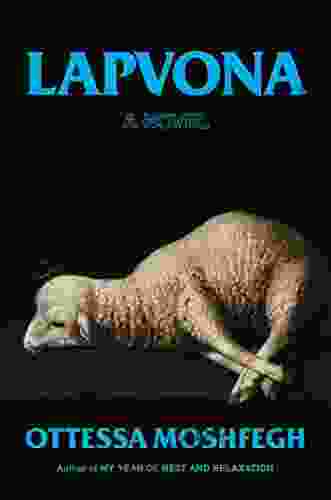
 Hunter MitchellJourney into the Dark Heart of Medieval Life: A Comprehensive Review of...
Hunter MitchellJourney into the Dark Heart of Medieval Life: A Comprehensive Review of... Raymond ChandlerFollow ·18.1k
Raymond ChandlerFollow ·18.1k Darren NelsonFollow ·15.8k
Darren NelsonFollow ·15.8k Bryan GrayFollow ·2.2k
Bryan GrayFollow ·2.2k Manuel ButlerFollow ·16.1k
Manuel ButlerFollow ·16.1k Miguel de CervantesFollow ·17.3k
Miguel de CervantesFollow ·17.3k Forrest BlairFollow ·5.7k
Forrest BlairFollow ·5.7k Cody RussellFollow ·5.6k
Cody RussellFollow ·5.6k Junichiro TanizakiFollow ·9.7k
Junichiro TanizakiFollow ·9.7k

 Bo Cox
Bo CoxDiscover the Enchanting Allure of Collingwood, Ontario,...
Nestled amidst the breathtaking landscape of...

 Ralph Ellison
Ralph EllisonThe Street of Clocks Poems: A Poetic Journey Through Time
Welcome to The Street...

 Dwight Blair
Dwight BlairCritical Political Economy of the Middle East and North...
The Middle East and...

 Deion Simmons
Deion SimmonsPerfect Strategies For Painting Amazing Marine Creatures...
Gouache is a...
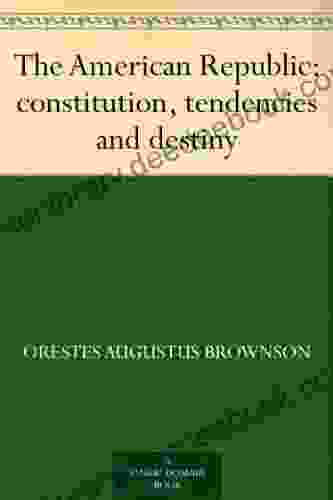
 Hugh Bell
Hugh BellThe American Republic: Constitution, Tendencies, and...
The American Republic,...
4.7 out of 5
| Language | : | English |
| File size | : | 4064 KB |
| Text-to-Speech | : | Enabled |
| Screen Reader | : | Supported |
| Word Wise | : | Enabled |
| Print length | : | 130 pages |
| X-Ray for textbooks | : | Enabled |


